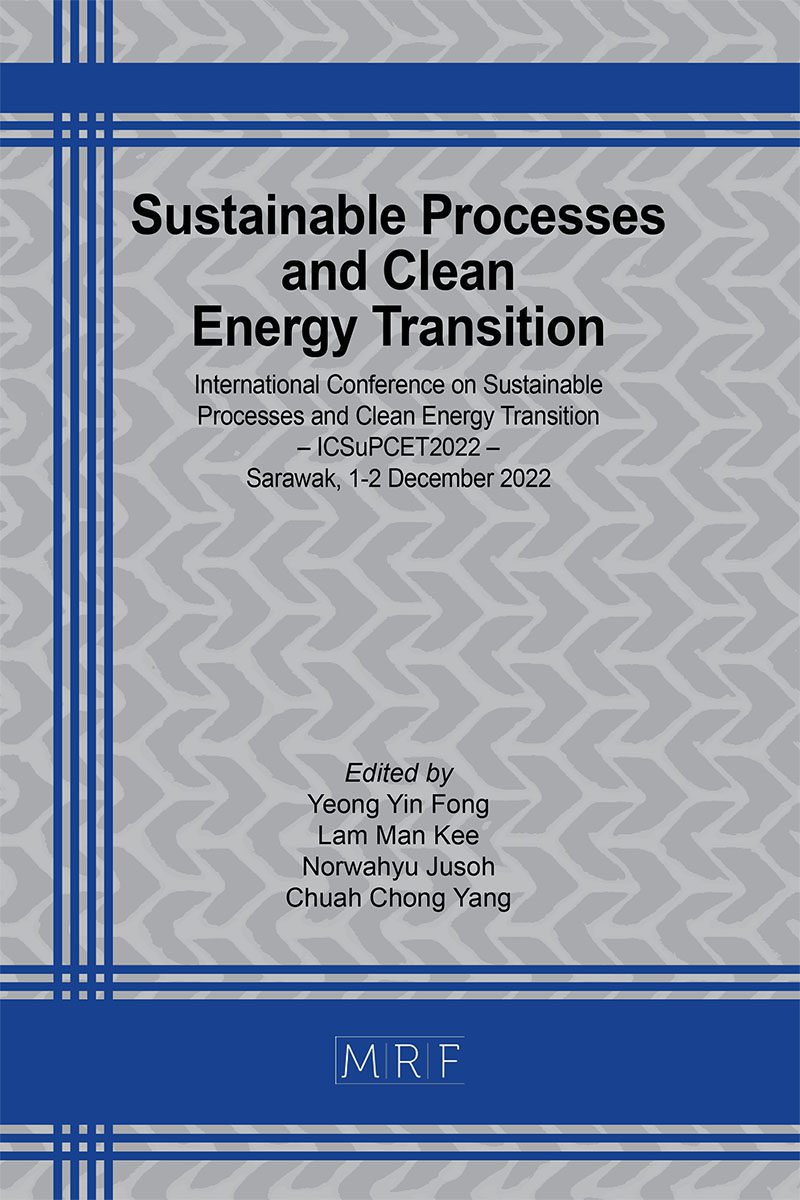GHG accounting framework: Development of the GHG assessment indicator for the petroleum refinery sector
NABILA Farhana binti Jamaludin, NUR ‘Aifaa Syamimi Binti Shuhaimi, MUHAMMAD Fairis bin Hadipornama
download PDFAbstract. The petroleum refineries sector is one of the highest-ranked sectors in terms of GHG emissions per facility. As a way forward in managing climate change, GHG assessment has become crucial in achieving net zero emissions. The objective of this study is to develop appropriate measurements for GHG assessment performance for the Malaysia petroleum refinery sector. The framework includes establishing indicators and parameters to quantify and assess carbon footprint and to obtain an approximate measure for carbon footprint accounting. The overall methodology for the GHG assessment framework is separated into two main parts with a total of eight steps for this study to be completed, however in this study the focus is only on the familiarization of plant, determination of parameters and indicators and greenhouse gases mapping which are part of the indicator development. With all information of the study being prepared, the next goal is to develop a comprehensive framework that can be used in the petroleum refinery process for carbon footprint accounting.
Keywords
Carbon Accounting, GHG Accounting, Framework, Assessment, Petroleum Refinery
Published online 5/20/2023, 8 pages
Copyright © 2023 by the author(s)
Published under license by Materials Research Forum LLC., Millersville PA, USA
Citation: NABILA Farhana binti Jamaludin, NUR ‘Aifaa Syamimi Binti Shuhaimi, MUHAMMAD Fairis bin Hadipornama, GHG accounting framework: Development of the GHG assessment indicator for the petroleum refinery sector, Materials Research Proceedings, Vol. 29, pp 362-369, 2023
DOI: https://doi.org/10.21741/9781644902516-41
The article was published as article 41 of the book Sustainable Processes and Clean Energy Transition
![]() Content from this work may be used under the terms of the Creative Commons Attribution 3.0 license. Any further distribution of this work must maintain attribution to the author(s) and the title of the work, journal citation and DOI.
Content from this work may be used under the terms of the Creative Commons Attribution 3.0 license. Any further distribution of this work must maintain attribution to the author(s) and the title of the work, journal citation and DOI.
References
[1] UNFCCC, ‘Malaysia nationally determined contribution update’, 2021.
[2] Ministry of Energy and Natural Resources, ‘Malaysia’s Energy Transition Plan 2021-2040 featured at the Special Meeting Of Asean Ministers On Energy and The Minister Of Economy, Trade and Industry Of Japan’, no. June, pp. 1–2, 2021.
[3] M. Mcmanus, ‘Here’s How The “Carbon Footprint” Should Really Be Used – It’s Not For Shifting Blame : ScienceAlert’, Science Alert, 2022. https://www.sciencealert.com/fossil-fuel-companies-have-co-opted-carbon-footprint-strategies-to-shift-the-blame-onto-us (accessed Sep. 27, 2022).
[4] Knoema, ‘Malaysia CO2 emissions, 1970-2021 – knoema.com’, 2020. https://knoema.com/atlas/Malaysia/CO2-emissions (accessed Sep. 27, 2022).
[5] H. L. C. Amanda, N. Z. Mahmood, and A. A. Abdul Raman, ‘Carbon accounting initiatives: case study of a petroleum refinery in Malaysia to prepare for future carbon market’, Journal of Engineering Science and Technology, vol. 5, no. 2, pp. 224–233, 2010.
[6] L. Huang, Q. Liao, J. Yan, Y. Liang, and H. Zhang, ‘Carbon footprint of oil products pipeline transportation’, Science of The Total Environment, vol. 783, 2021. https://doi.org/10.1016/j.scitotenv.2021.146906
[7] J. Guo, A. Orellana, S. Sleep, I. J. Laurenzi, H. L. MacLean, and J. A. Bergerson, ‘Statistically enhanced model of oil sands operations: Well-to-wheel comparison of in situ oil sands pathways.’, Energy, vol. 208, 2020. https://doi.org/10.1016/j.energy.2020.118250
[8] R. Clabeaux, M. Carbajales-Dale, D. Ladner, and T. Walker, ‘Assessing the carbon footprint of a university campus using a life cycle assessment approach’, Journal of Cleaner Production, vol. 273, 2020. https://doi.org/10.1016/j.jclepro.2020.122600
[9] A. Malakahmad, M. S. ’ Abualqumboz, S. R. M. Kutty, and T. J. Abunama, ‘Assessment of carbon footprint emissions and environmental concerns of solid waste treatment and disposal techniques; case study of Malaysia.’, Waste Management, vol. 70, pp. 282–292, 2017. https://doi.org/10.1016/j.wasman.2017.08.044































